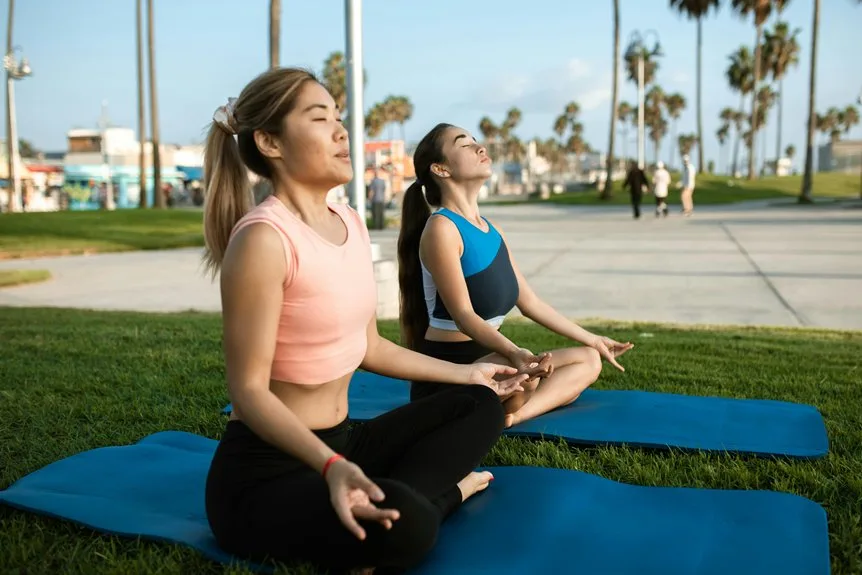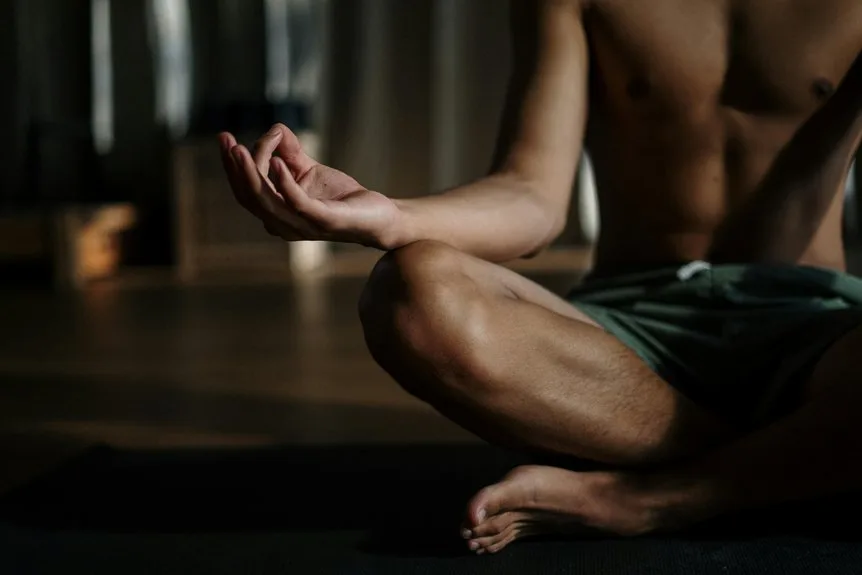Stress seems to pop up everywhere these days, sneaking into busy schedules and making even small tasks feel overwhelming. Breathing exercises, though simple, are gaining attention as a practical way to hit pause on chaos and find a moment of calm. But what’s really happening inside the body when someone takes a deep breath, and how can something so basic make such a big difference? The answer might be more surprising than expected.
Understanding Stress and Its Effects on the Body
Ever wonder why stress seems to take over both mind and body so quickly? When stress hits, the body shifts into high gear—heart racing, muscles tensing, and sweat starting to form. Adrenaline and cortisol surge, preparing you to react, but if this state lingers, it can lead to headaches, high blood pressure, or even heart disease. Breathing becomes rapid and shallow, often making anxiety feel worse. This physical response, meant to protect, ends up harming well-being when it lasts too long. Over time, stress can chip away at immune function and mental health, leaving people feeling isolated and exhausted. For those seeking a relaxation with wine and a calming retreat, places like Solage in Calistoga can offer a tranquil escape amidst the scenic beauty of Napa Valley.
The Connection Between Breathing and Emotional States
Although it might not seem obvious at first, the way a person breathes is closely tied to how they feel emotionally. For example, happiness often brings smooth, steady breaths, while stress makes breaths short and quick. These changes in breathing patterns are like a secret signal to the nervous system, shaping emotional states. Breathing exercises, especially deep breathing techniques, can flip this script—slowing down the breath helps calm the mind. By simply adjusting the inhale-to-exhale ratio, anyone can influence their own stress relief. In practice, controlled breathing gives people a simple tool to better manage emotions every day. For individuals looking to enhance their wellness journey, Sensei Porcupine Creek provides a serene environment that promotes relaxation and stress relief.
How Deep Breathing Activates Relaxation
When someone takes a slow, deep breath, it signals the body’s parasympathetic system to step in and hit the brakes on stress. This simple act floods the brain with more oxygen, easing the mind and helping muscles relax, almost like flipping a switch from panic to calm. Engaging in deep breathing exercises can be an integral part of wellness and balance as a lifestyle, as practiced at Two Bunch Palms, where guests are encouraged to unwind and unplug.
Reversing the Stress Response
There’s something almost magical about how a few slow, deep breaths can help turn chaos into calm. When someone practices deep breathing, their body gets a signal to ease up, slowing the heart rate and helping blood pressure drop to a more peaceful level. Imagine tension melting away, headaches fading, and rapid heartbeats returning to a steady rhythm—all just from mindful breathing. By making exhalations longer than inhalations, adrenaline drops, which helps dial down the stress response. Over time, regular deep breathing doesn’t just soothe the moment; it trains the body to handle future stress with greater ease. Just like the serene surroundings of Pneuma Retreat Center, deep breathing provides an immersive experience in tranquility and relaxation.
Parasympathetic System Activation
Feeling the body unwind with each steady breath is more than just a nice sensation—it’s actually the parasympathetic nervous system at work. Deep breathing isn’t just about slowing down; it’s about triggering parasympathetic system activation, which shifts the body from stress to relaxation.
By stimulating the vagus nerve, these calming breaths help lower heart rate and blood pressure, making everyone feel more connected and at ease. Here’s how it works:
- Deep breaths activate the vagus nerve, enhancing relaxation.
- Slowing breath improves parasympathetic system activation.
- Regular practice builds resilience, helping communities manage stress together.
Oxygenation and Mind Calm
A steady, deep breath does more than just fill the lungs—it actually works behind the scenes to calm both body and mind. Deep breathing enhances oxygenation, which is like giving your system a gentle reset, especially when feeling stressed.
This extra oxygen helps slow the heart rate, relax tense muscles, and guide the brain toward relaxation instead of fight-or-flight mode. Over time, practicing deep breaths every day can help reduce stress and even improve physical health.
For those facing chronic stress, deep breathing acts as a small but powerful tool, bringing calm and stress relief to daily life.
Simple Breathing Techniques for Immediate Calm
Learning a few quick breathing exercises can make it surprisingly easy to find calm, even in the middle of a busy day or a stressful moment. With simple steps that take just seconds, anyone can use these techniques anywhere—whether at a desk, in a car, or waiting in line.
A handful of helpful tips can make each breath count, turning ordinary moments into instant stress relief sessions.
Quick Breathing Exercise Steps
Sometimes, stress creeps in when it’s least expected, but quick breathing exercises can offer a simple way to regain a sense of calm almost instantly. Using Deep Breathing Techniques helps people feel connected and grounded, especially when anxiety strikes.
Here’s a quick guide anyone can try:
- Sit comfortably, place one hand on your belly and the other on your chest to monitor your breaths.
- Inhale through your nose for three counts, feeling your belly expand.
- Exhale gently through your mouth for three counts, noticing your chest and belly fall.
Repeat this cycle several times to invite immediate calm.
Calm Anywhere, Anytime
Even in the middle of a hectic day—whether stuck in traffic or waiting in a long line—simple breathing techniques can work like a secret superpower to create instant calm.
Taking a deep breath in for four counts, then exhaling slowly for eight, activates the body’s natural relaxation response. It’s one of the easiest ways to support your health, needing no equipment or private space.
These quick techniques can lower heart rate and blood pressure, melting away stress on the spot. Practicing together or alone, everyone can use these moments to feel more connected, grounded, and present—anywhere, anytime.
Tips for Effective Practice
Finding a moment for a few deep breaths can be surprisingly powerful, especially when the world feels overwhelming. Simple breathing techniques for immediate calm become much more effective with a few practical tips. Creating a sense of belonging with the breath, and a supportive environment, can make all the difference.
To get started, consider these steps:
- Sit comfortably in a quiet place, maintaining an upright, relaxed posture for full lung expansion.
- Breathe deeply—inhale through your nose for three counts, exhale through your mouth for three, keeping a steady rhythm.
- Monitor movement by resting a hand on your belly and chest, ensuring diaphragmatic breathing.
The Science Behind Breathwork and Mental Health
Many people are surprised to learn that the simple act of breathing can have a powerful influence on mental health. Science shows that steady, deep breaths—rooted in understanding breath anatomy—help activate the parasympathetic nervous system, which calms the body.
When breathing is slow and controlled, especially with longer exhales, stress responses drop and relaxation takes hold. Research confirms that intentional breathwork can ease anxiety and depression, helping people feel more at ease together.
Practicing these techniques regularly can actually re-train the nervous system, making stressful moments less overwhelming and cultivating a sense of belonging and calm in daily life.
Deep Breathing Versus Traditional Meditation
When it comes to quick fixes for stress, deep breathing stands out for its simplicity and convenience, requiring no special setting or long training.
Unlike traditional meditation, which often asks for focused attention and quiet moments, deep breathing can be done anywhere—even in the middle of a busy day. This makes it an easy way to bring a bit of calm and mindfulness without the extra steps, perfect for those who need stress relief on the spot.
Accessibility and Ease
Unlike traditional meditation, which often calls for a quiet space and a chunk of uninterrupted time, deep breathing exercises are the kind of stress relief you can sneak in just about anywhere. No need to download fancy tech gadgets or hunt for silence—these techniques fit perfectly into daily routines and busy schedules.
Even if someone’s in a packed subway car or sitting at their desk, deep breathing doesn’t require much setup. Here’s why many people find it more accessible:
- No special equipment or space needed
- Easy to learn and adapt for all abilities
- Can be done almost anytime, anywhere
Immediate Stress Relief
There’s something almost magical about how quickly deep breathing can dial down stress. When stress hits, deep breathing steps in fast, calming the body within minutes by activating the parasympathetic nervous system.
Unlike traditional meditation—which sometimes feels like joining a club with a long membership process—deep breathing is quick, discreet, and doesn’t require hours of practice or special gear. Just a simple inhale for four counts, exhale for eight, and anxiety noticeably lessens.
Forget the old breathing myths; one doesn’t have to be a meditation expert to feel relief. Deep breathing welcomes everyone, offering a sense of calm on demand.
Mindfulness Without Complexity
Stress has a sneaky way of showing up uninvited, but deep breathing doesn’t demand anything fancy to send it packing. Unlike traditional meditation, which can feel as complex as Unrelated Gardening—think weeding a flower bed that isn’t yours—deep breathing fits easily into daily routines.
No chanting, no sitting cross-legged for ages, just a simple inhale-exhale rhythm that anyone can do, anywhere. The magic lies in its accessibility and speed, making mindfulness feel like a group activity that everyone’s welcome to join.
- Quick to learn, easy to remember
- No equipment or special setting needed
- Effective for immediate stress relief
Step-by-Step Guide to Practicing Deep Breathing
A simple way to start deep breathing is to find a quiet, comfortable spot—think of it as creating a mini oasis just for yourself. Settle in, either sitting or lying down, and place one hand on your chest and the other on your belly.
Inhale slowly through your nose, letting your belly rise more than your chest, and then exhale gently through your mouth or nose. Repeat this cycle for several minutes.
This hands-on approach helps debunk common breathing myths—real deep breathing starts in the belly, not the chest—bringing a shared sense of calm and genuine connection to breathing.
Benefits of Regular Breathwork for Long-Term Resilience
One key advantage of sticking with regular breathwork is how it quietly builds up long-term resilience against daily stress. Over time, making breathwork part of a daily routine can spark some unexpected benefits, like feeling less rattled by life’s curveballs.
People often notice they handle emotional challenges better, and stress just doesn’t pack the same punch. For those seeking a sense of belonging and support, consider these proven effects:
- Strengthened parasympathetic nervous system, keeping you calm.
- Reduced cortisol levels, lowering ongoing stress.
- Improved emotional regulation, making tough moments feel more manageable for everyone.
Breathing Exercises and Their Impact on Physical Health
Taking a few moments to focus on breathing isn’t just about calming the mind—it packs a real punch when it comes to physical health, too. Tuning in to proper breathing mechanics can lower blood pressure, ease muscle tension, and encourage a sense of physical relaxation that feels like a gentle reset.
Deep, steady breaths increase oxygen intake, which enhances circulation and supports heart health. Slow, intentional breathing also lessens the frequency of headaches and activates the parasympathetic nervous system, helping the heart slow down.
Over time, consistent breathwork can strengthen respiratory function, making the body more resilient and ready for life’s challenges.
Using Breath Control in Everyday Stressful Situations
Stressful moments seem to pop up when least expected—whether it’s running late for an appointment, getting stuck in traffic, or facing a tough conversation. These unexpected triggers can easily rattle anyone, but breath control can offer instant help.
By focusing on slow, deep breaths or lengthened exhalations, the body’s relaxation response kicks in, calming the mind and easing tension. Breath control keeps negative emotions from spiraling, even when life throws curveballs.
For those wanting to feel more connected and less alone in handling stress, try these:
- Inhale for four counts, exhale for eight.
- Pause and breathe deeply.
- Focus attention on breath.
Complementary Self-Care Practices for Stress Management
A well-rounded approach to managing stress often goes beyond just breathing exercises, pulling in a mix of other simple self-care habits that work together for bigger benefits.
Many find that combining practices like mindfulness, regular exercise, and diet planning helps them feel more connected and supported. For example, eating balanced meals can steady energy and mood, while restful sleep repairs the mind.
Adding breathing techniques into this routine may enhance the body’s relaxation response, making it easier to handle challenges together.
Educating oneself on these complementary habits can build a stronger sense of community and lasting emotional well-being.
Common Mistakes and Tips for Effective Breathwork
One thing that often trips people up with breathwork is how easy it is to do it “wrong”—not in a dangerous way, but in a way that just doesn’t help much. Common mistakes include shallow or rushed breathing, which can actually crank up stress, not calm it down. Breath Awareness is about tuning in, not forcing things.
For a smoother experience, remember:
- Choose a quiet, comfortable spot before you begin—no need to rush.
- Keep your inhale and exhale steady and balanced; don’t hurry.
- Practice regularly and patiently; benefits grow over time, not overnight.
Everyone’s learning together—progress counts!
Resources for Further Learning and Practice
These days, there’s no shortage of ways to plunge deeper into breathwork and make it a regular part of life. With Tech Trends leading the way, mobile apps like Calm, Headspace, and Insight Timer offer guided breathing sessions perfect for anyone wanting to relax or tackle anxiety.
Online platforms, including Harvard Health Publishing, provide free guides and video tutorials, so there’s always something new to try.
Books like “The Healing Power of the Breath” dig into science-backed strategies, while community classes or online workshops bring people together.
Exploring different resources encourages shared growth and helps everyone build resilience to stress.
Frequently Asked Questions
How Does Stress Affect Your Breathing?
Stress impact on breathing is significant; it triggers rapid, shallow breaths and activates the sympathetic nervous system. This can lead to irregular, chest-dominant breathing, reducing oxygen intake, increasing physical tension, and making individuals feel disconnected from calmness and community.
What Is the Best Breathing Technique for Anxiety?
As the adage goes, “slow and steady wins the race.” For anxiety, deep diaphragms—such as slow, mindful breathing with extended exhales—often prove most effective, promoting unity through shared practice and supporting a sense of collective calm.
Why Is Breathing so Important to Exercise and Positive Mental Health?
Breathing is essential to exercise and positive mental health because it strengthens the mind body connection, supports cellular function, and promotes emotional stability. Through mindful breathing, individuals experience improved well-being, enhanced resilience, and a greater sense of belonging.
Final Thoughts
Breathing exercises aren’t just trendy—they’re backed by science. In fact, one study found that practicing deep breathing for just five minutes a day lowered anxiety in nearly 70% of participants. With benefits like a calmer mind, steadier heart, and less tension, these simple techniques are a practical tool for everyday stress. So, whether it’s a tough test or a hectic day at work, a few mindful breaths can make a real difference—no fancy equipment needed.







